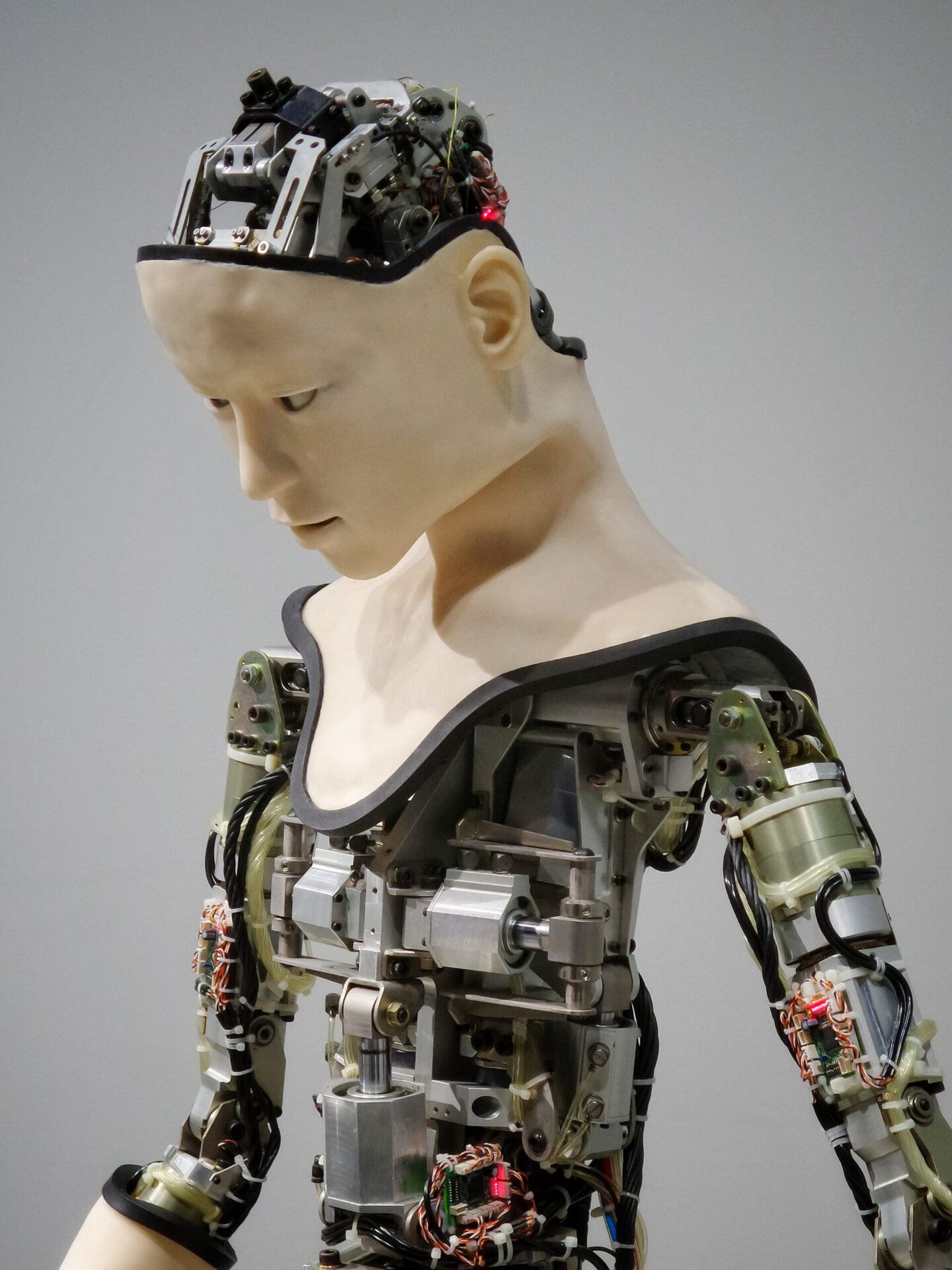Introduction
Augmented Reality: A Revolution in Gaming
In recent years, Augmented Reality (AR) has been nothing short of a revolution, particularly in the gaming industry. From games like Pokémon GO to Harry Potter: Wizards Unite, AR has captivated the imagination of gamers by superimposing digital information—be it characters, objects, or scenes—over the real world. The interactive experience created by the blend of the virtual and real worlds has made AR a buzzword synonymous with next-level gaming. But the potential of this technology extends far beyond the realms of entertainment and leisure.
Beyond Gaming: The Untapped Potential of AR Technology
While the gaming sector has popularized Augmented Reality, limiting AR to just this field would be an oversimplification of its vast capabilities. AR technology holds transformative potential for a multitude of sectors—healthcare, education, retail, and industrial applications, to name just a few. This blog post aims to explore these broader applications and delve into the importance of AR technology in reshaping our day-to-day experiences and professional landscapes.
In the following sections, we will uncover how AR is making significant strides in areas like healthcare diagnostics, educational interactions, retail customer experience, and industrial training. As we pull back from the gaming-centric view, the myriad of possibilities that AR offers come into clearer focus.
What is Augmented Reality?
Definition and History of Augmented Reality
Augmented Reality, or AR as it is commonly known, is a technology that overlays digital information, such as images, videos, or sound, onto the real world. While the concept has existed for decades, the term “Augmented Reality” was coined in 1990 by Tom Caudell, a researcher at Boeing. Since then, the technology has advanced exponentially, particularly in the last decade with the advent of more powerful computing and graphics capabilities.
Initially, AR was used in military, industrial, and research applications to superimpose virtual objects on physical environments. However, the rise of consumer electronics like smartphones and tablets equipped with AR-friendly features has democratized the technology, making it accessible to the general public.
Key Features That Distinguish AR
Real-world Integration
Unlike Virtual Reality (VR), which immerses the user in a completely artificial environment, AR incorporates digital elements into the user’s real-world setting. This makes it far more interactive and user-friendly for a range of practical applications beyond gaming.
Interactivity
AR provides a two-way interaction between the user and the system, allowing for real-time data updates and adjustments. This makes AR highly adaptable and responsive to the user’s needs and actions.
Hardware Flexibility
AR doesn’t require specialized hardware like VR headsets. It can work on everyday devices such as smartphones, tablets, and even some wearables, making it far more accessible for the average person.
Spatial Awareness
Advanced AR systems use complex algorithms to understand the geometry and semantics of the real-world environment. This allows for more intuitive and context-aware overlay of digital information.
Real-Time Updates
Another feature that sets AR apart is its ability to update information in real-time, which is crucial for applications in healthcare, industrial training, and navigation.
Virtual Reality vs Augmented Reality
While both Virtual Reality and Augmented Reality offer interactive experiences, the key difference lies in the level of immersion and the interaction with the real world. VR creates a completely artificial environment in which the user is immersed, losing all contact with the real world. AR, on the other hand, enriches the user’s real-world experience by adding digital elements to it, thereby enhancing real-world scenarios rather than replacing them.
Augmented Reality in Healthcare
How Augmented Reality is Transforming Healthcare
When we think about cutting-edge technology in healthcare, devices like robotic surgical assistants and telemedicine platforms often come to mind. However, one of the most significant technological leaps in modern medicine comes from the integration of Augmented Reality (AR). AR is revolutionizing various aspects of healthcare, from medical training and education to diagnosis and treatment, offering unparalleled benefits that were unimaginable just a few years ago.
Medical Training and Education
Traditionally, medical training relied heavily on textbooks, two-dimensional images, and the invaluable yet limited resource of cadaver labs. Today, AR offers a much more interactive and immersive learning experience. Medical students can now use AR glasses or even AR-enabled apps on their tablets to overlay digital data over a real human body. This not only enhances the learning experience but also provides a far more accurate understanding of human anatomy and medical procedures.
Example: Touch Surgery
Touch Surgery is an AR application that allows medical students to practice surgeries in a simulated AR environment, offering step-by-step guidance for various surgical procedures.
Diagnosis and Imaging
Diagnosing conditions often requires interpreting two-dimensional data from MRIs, X-rays, or CT scans. AR can convert these 2D images into 3D models and superimpose them onto a patient’s body during real-time examination or surgery, thereby providing healthcare providers with a more comprehensive understanding of the condition.
Example: AccuVein
AccuVein is an AR device used for vein visualization. It projects an image of the vasculature on the skin’s surface, making venipuncture (inserting a needle into a vein) more accurate.
Treatment and Surgery
AR also finds applications in treatment plans and surgeries. Surgeons can overlay digital guides onto their field of view, helping them make more precise incisions and navigate complicated procedures more comfortably.
Example: Microsoft HoloLens in Surgery
Surgeons at Imperial College London used Microsoft’s HoloLens to overlay digital CT scans onto a patient’s leg in real-time, allowing for more precise surgical interventions.
Benefits of Augmented Reality in Healthcare
The advantages of employing AR in healthcare are manifold:
- Enhanced Medical Training: AR offers a more hands-on and interactive educational experience for medical students.
- Improved Diagnosis: Real-time AR overlay can make diagnoses more accurate and less invasive.
- Increased Surgical Precision: Real-time digital guides can significantly reduce surgical errors.
- Patient Engagement: AR applications can educate patients about their conditions in a more interactive way, increasing compliance and engagement.
The Educational Realm of Augmented Reality
Applications of Augmented Reality in Education
While the gaming industry has been the most visible benefactor of Augmented Reality (AR), the technology’s impact on education is becoming increasingly evident. Classrooms, laboratories, and educational institutions worldwide are employing AR to transform traditional learning paradigms into more engaging and interactive experiences.
Augmenting Textbooks and Learning Material
Traditional textbooks are static, but imagine a biology textbook where the illustrations of plant cells come to life, or a history book where you can virtually visit the ruins of ancient civilizations.
Example: ARTextbooks
Companies like ARTextbooks are leading the charge in creating AR-enabled textbooks that come to life when scanned with a smartphone or tablet, offering 3D models, interactive quizzes, and supplementary videos.
Enhancing Field Trips
Field trips are an excellent way for students to engage with their environment, but they can be logistically difficult and expensive. AR can simulate field trips within the classroom setting itself.
Example: Google Expeditions
Google Expeditions allows teachers to guide students through 360-degree panoramas or 3D scenes by using AR. Whether it’s a trip to the moon or a dive in the coral reefs, students get to explore environments that would otherwise be inaccessible.
Skill Training
Vocational training is another area where AR is making a significant impact. Whether it’s in healthcare, engineering, or culinary arts, AR provides practical, hands-on experience that is invaluable for skill development.
Example: Bosch’s Common Augmented Reality Platform (CAP)
Bosch has developed CAP to assist with training in various mechanical tasks. It provides real-time, remote technical support and guidance, overlaying digital instructions directly onto the task at hand.
Benefits of Using Augmented Reality in Education
- Increased Engagement: The interactive nature of AR keeps students more engaged compared to traditional methods.
- Enhanced Retention: Studies have shown that the retention of information is significantly higher when learning through AR.
- Accessibility: AR can make complex subjects more accessible by breaking them down into interactive, manageable components.
- Collaboration: AR promotes collaboration among students as they can share their AR experiences and work together on problem-solving.
AR Technology in the Retail Sector
Benefits of Using AR Technology in Retail
The retail landscape is undergoing a dramatic transformation, fueled by technological advancements and evolving consumer preferences. Amidst this change, Augmented Reality (AR) is emerging as a powerful tool for enriching the customer experience and driving engagement. From virtual try-ons to interactive 3D ads, AR is shaping a new retail reality.
Virtual Try-Ons
One of the major challenges of online shopping is the inability to try on products, especially clothing and accessories, before purchasing. AR technology bridges this gap by allowing customers to virtually try on items using their smartphone or computer cameras.
Example: Warby Parker’s Virtual Try-On App
Warby Parker, an eyewear brand, has a Virtual Try-On app that allows customers to try on glasses virtually, giving them a pretty accurate idea of how the frames will look in real life.
In-Store Navigation
Brick-and-mortar stores are also benefitting from AR by implementing features like in-store navigation. Shoppers can use their smartphones to find the exact location of a product within a store.
Example: Lowe’s AR Navigation
Home improvement store Lowe’s uses AR technology to help customers navigate through their large stores, leading them right to the products they’re looking for.
Enhanced Product Information
AR can overlay digital information, such as user reviews or product specifications, onto physical items in the store. This not only educates the customer but also aids in making more informed decisions.
Example: Sephora’s Virtual Artist
Beauty retailer Sephora uses AR to provide additional information on their range of products, from how-to videos to customer reviews, all accessible by scanning the product with their app.
Interactive Advertising
Brands are using AR to create interactive 3D ads that customers can engage with. Unlike traditional static ads, AR advertisements are not only more engaging but also provide a richer understanding of the product.
Example: Pepsi’s Unbelievable Bus Shelter
Pepsi created an interactive AR experience at a London bus stop where the glass of the bus shelter transformed into a screen displaying incredible scenarios, from alien invasions to prowling tigers, capturing the attention of passersby.
Concluding Thoughts on AR in Retail
The impact of AR technology on the retail sector is undeniable. It’s not just a gimmick but a beneficial tool that enhances the shopping experience in multiple ways:
- Personalized Shopping: Virtual try-ons cater to individual preferences.
- Informed Decisions: Enhanced product information allows for more educated choices.
- Ease of Navigation: In-store AR navigation saves time and improves the shopping experience.
- Increased Engagement: Interactive AR ads are far more engaging than traditional advertising methods.
Industrial Applications of Augmented Reality
Future Trends in Industrial Augmented Reality
Augmented Reality (AR) is not just for gaming or retail; its applications in industrial settings are both expansive and transformative. From manufacturing lines to logistics operations, AR technology is making complex tasks simpler, more efficient, and safer. In this section, we’ll explore how AR is revolutionizing industrial processes and take a glimpse into the future trends shaping this technological frontier.
Manufacturing
In manufacturing, AR can serve multiple functions—assembly, maintenance, and even quality control. Workers equipped with AR goggles can see a digital overlay of assembly instructions, making the process quicker and reducing the margin for error.
Example: Porsche’s “Tech Live Look”
Porsche utilizes AR glasses to provide remote technical support to service employees during complex repair tasks, reducing service resolution time by up to 40%.
Logistics and Supply Chain Management
AR also finds applications in the logistics sector. AR can help in sorting packages more efficiently by overlaying information about destination and optimal route directly onto the parcels.
Example: DHL’s AR Glasses
Logistics giant DHL equipped its workers with AR glasses that display the most efficient path through the warehouse, resulting in a 25% improvement in overall efficiency.
Employee Training and Skill Development
Industrial tasks often require specialized skills. AR can accelerate the training process by offering a more interactive and hands-on learning experience.
Example: Honeywell’s Intelligent Wearables
Honeywell provides AR wearables that offer real-time, hands-on training, making the onboarding process for new employees quicker and more effective.
Future Trends in Industrial AR
As AR technology matures, several trends are emerging that promise to reshape industrial applications of AR:
- Machine Learning Integration: Advanced machine learning algorithms will make AR systems smarter, capable of providing real-time analytics and insights.
- Real-time Collaboration: Workers from different geographical locations will be able to collaborate in real-time using AR interfaces.
- Advanced Safety Features: Future AR wearables will include features that enhance worker safety, such as hazard alerts and emergency response systems.
- IoT and AR Synergy: The Internet of Things (IoT) and AR will work in tandem to offer a more connected and efficient industrial environment.
Augmented Reality in Real Estate
Augmented Reality Real Estate Tour Solutions
The real estate industry has always been reliant on visual experiences. A shift toward digitization, especially the integration of Augmented Reality (AR), has significantly upgraded the way realtors, and buyers experience property viewing. In this section, we’ll delve into how AR is enhancing the real estate market, offering a unique blend of benefits and some limitations.
Virtual Property Tours
Traditionally, real estate decisions involved multiple visits to different properties to get a real feel of the space. With AR, a detailed, immersive experience is available right at your fingertips.
Example: Matterport’s 3D Virtual Tours
Matterport provides an AR solution that allows users to virtually navigate properties, offering a 360-degree view of each room, and even simulating natural lighting conditions.
Benefits of Using AR in Real Estate
- Convenience: Potential buyers can tour multiple properties in a single day without the hassle of traveling.
- Global Reach: Realtors can showcase properties to international buyers.
- Cost-Effective: Both buyers and sellers save on the costs typically associated with multiple property visits.
- Interactive Experience: Users can interact with the environment, such as changing furniture or wall colors, providing a personalized experience.
Example: Zillow’s 3D Home
Zillow offers an AR-based app that not only allows for virtual tours but also enables users to visualize different home improvements.
Limitations of AR in Real Estate
While AR offers multiple benefits, it’s not without limitations:
- Technology Barrier: The experience is only as good as the device used. Older smartphones may not offer the best AR experience.
- High Initial Costs: Setting up AR tours may require a significant investment in technology and software.
- Lack of Physical Experience: Despite the immersive experience, some buyers still prefer the tactile feel of physically visiting a property.
Conclusion: The Future of AR in Real Estate
Augmented Reality is already making waves in the real estate sector, providing a more interactive, convenient, and global reach for property viewing. While there are some limitations, the advantages far outweigh the drawbacks, making AR a valuable asset in any realtor’s toolkit.
Marketing Strategies and Augmented Reality
The Role of AR in Modern Marketing Strategies
In an age where digital advertising has flooded consumers with endless options, standing out can be challenging. Augmented Reality (AR) is emerging as a game-changer in the field of marketing, transforming customer engagement and providing new avenues for brand storytelling. In this section, we’ll discuss the role of AR in modern marketing strategies and provide real-world case studies to underscore its potential.
Customer Engagement and Interactivity
Interactive marketing is more effective in retaining customer attention than passive forms. AR can create immersive brand experiences that engage customers in a unique and memorable way.
Case Study: IKEA Place App
IKEA’s AR app allows users to visualize how furniture will look in their home before making a purchase. The app boosts customer engagement by offering a personalized experience, which in turn increases sales.
Brand Storytelling
AR can offer more than just interactive ads; it can tell compelling stories that resonate with customers, turning passive observers into active participants.
Case Study: New York Times and Google AR Collaboration
The New York Times partnered with Google to create an AR experience that brought news stories to life, making the user a part of the unfolding narrative. This interactive storytelling approach led to increased reader engagement.
Customer Insights and Analytics
AR provides valuable data on user behavior, from how much time they spend interacting with an AR experience to the choices they make within it, helping brands tailor their future marketing strategies.
Case Study: Pepsi Max Unbelievable Campaign
Pepsi launched an AR experience at a bus stop in London, surprising commuters with unbelievable scenarios like alien invasions and rampaging robots. The campaign not only went viral but provided Pepsi with valuable insights into customer interaction and engagement.
Immersive Shopping Experiences
AR can turn shopping into an experience rather than a chore. Virtual try-ons and product previews significantly enhance the online shopping experience.
Case Study: L’Oreal’s AR Beauty App
L’Oreal’s app allows customers to virtually try on makeup, making the online shopping experience much more interactive and satisfying. It has led to higher conversion rates and lower return rates for the brand.
Conclusion: The Future is Augmented
AR is more than a technological gimmick; it’s an evolving field that offers practical, tangible benefits in marketing. Its ability to engage customers, tell captivating stories, and gather valuable data makes it a formidable tool in the arsenal of modern marketing strategies.
Software and Tools for AR Development
Best Software for Augmented Reality Development
Entering the realm of Augmented Reality (AR) development can be an exciting endeavor, yet also a complex one given the plethora of software and tools available. Knowing the right platforms and languages can make a significant difference in the efficiency and quality of your AR projects. In this section, we explore the best software for Augmented Reality development, helping you make an informed choice for your next project.
Game Engines: The Bedrock of AR
Game engines provide the underlying architecture upon which AR applications can be built.
- Unity
- Pros: Highly flexible, extensive support for AR libraries, large developer community
- Cons: Requires proficiency in C# scripting
- Notable Applications: Pokemon Go, IKEA Place
- Unreal Engine
- Pros: High-quality rendering, Blueprint scripting allows for code-free development
- Cons: Steeper learning curve, higher system requirements
- Notable Applications: Star Wars: Secrets of the Empire
AR SDKs: The Building Blocks
Software Development Kits (SDKs) offer pre-built functions to ease the development process.
- ARKit
- Pros: Native support for iOS, robust feature set including face tracking
- Cons: iOS exclusive
- Notable Applications: Snapchat Lenses
- ARCore
- Pros: Google’s AR SDK for Android, offers environmental understanding
- Cons: Android exclusive
- Notable Applications: Google Maps AR navigation
- Vuforia
- Pros: Cross-platform, offers Object Recognition, Cloud Recognition
- Cons: Pricing can be steep
- Notable Applications: VW’s MARTA app
Languages for AR Development
While the choice of language largely depends on the platform, here are commonly used languages:
- C#: Mainly for Unity development
- C++: Used in Unreal Engine
- Swift: For iOS-focused AR development
- Java: For Android-centric AR applications
Conclusion: Choosing the Right Toolset
Selecting the best software for Augmented Reality development is crucial to the success of your project. While Unity and Unreal Engine are dominant in the game engine arena, choosing between ARKit, ARCore, and Vuforia could depend on your target platform and specific needs. Understanding the pros and cons of each software will help you tailor your AR development process more efficiently.
Limitations of Augmented Reality
Limitations and Challenges of Implementing AR in Business
While Augmented Reality (AR) is an intriguing frontier with limitless potential, it is not without its limitations. From healthcare to retail, many sectors are embracing AR, but they also encounter challenges in its implementation. In this section, we explore the limitations and challenges of implementing AR in various business sectors.
Hardware Limitations
One of the primary barriers to the widespread adoption of AR is hardware. High-quality AR experiences require robust computational power, high-resolution displays, and precise tracking systems.
Example: Google Glass, initially highly touted, failed to capture mass-market appeal, partially due to limitations in its hardware, such as battery life and display capabilities.
User Experience Challenges
Inconsistent or laggy AR experiences can frustrate users. Usability, interface design, and motion sickness are areas where AR still needs improvement.
Example: Early versions of Microsoft’s HoloLens received criticism for their narrow field of view, affecting the user experience.
Cost and Development Complexity
Developing a functional, user-friendly AR application can be an expensive and time-consuming process.
Example: Snapchat has invested heavily in AR features, including the acquisition of several AR companies, showcasing the financial commitments necessary for quality AR development.
Data Privacy Concerns
As AR applications often require access to cameras and other sensors, data privacy becomes a significant concern.
Example: Facebook’s AR ads have raised questions about how much user data is being harvested and how it’s being used.
Limited Use Cases and Scalability
While AR has multiple applications, not all of them provide enough value to warrant the costs and complexities of implementation.
Example: AR in education shows promise, but the lack of robust, standardized curricula limits its widespread adoption.
Conclusion: Navigating the AR Landscape
The limitations and challenges of implementing AR in business are substantial but not insurmountable. Awareness of these limitations can guide more informed decisions and lead to more effective solutions. As technology advances, many of these limitations will likely be overcome, paving the way for more extensive and practical AR applications.
Conclusion: The Future of Augmented Reality—It’s More Than Just Games
As we’ve journeyed through the fascinating world of Augmented Reality (AR), it’s evident that its scope goes far beyond the realms of gaming. From transforming healthcare procedures and revolutionizing educational experiences to altering the landscape of retail and industrial sectors, AR is making its presence felt in almost every facet of our lives.
The Immense Potential of AR
The disruptive power of Augmented Reality can’t be overstated. It’s not just about overlaying digital elements onto the real world; it’s about enhancing our capabilities, making complex tasks easier, and creating more engaging and personalized experiences across various sectors. We’ve looked at how AR is shaping healthcare, education, retail, industry, real estate, marketing, and even software development itself. While challenges and limitations exist, they are but stepping stones on the path to innovation.
Your Role in the AR Revolution
So what can you do in this rapidly evolving field? Whether you’re a developer looking to dive into AR programming or an entrepreneur thinking about integrating AR into your business, or even just a curious individual—now is the time to get involved. Begin by exploring the tools and platforms that make AR development accessible. If you’re in business, consider how AR can solve problems or create new opportunities for your customers.
A Call to Action
As the saying goes, the best way to predict the future is to create it. With AR, we have the tools to create a future that is more interactive, more informative, and more engaging.
So why wait? Dive into the world of Augmented Reality. Explore its applications, understand its limitations, and think about how you can be a part of this technological revolution. Your journey into the incredible world of AR starts now!









